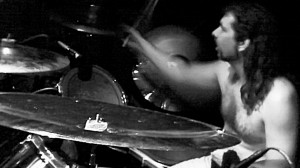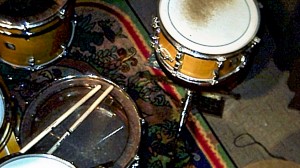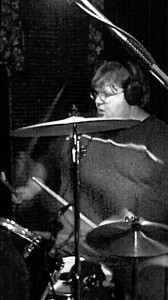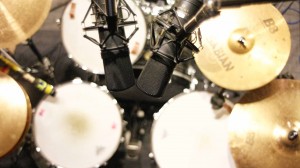 There are hundreds of dissertations on this subject around the web. Many written by people far more qualified than I. However, since I’ve recorded 400+ different kits over the years, and customer satisfaction has generally been high… This is Part One.
There are hundreds of dissertations on this subject around the web. Many written by people far more qualified than I. However, since I’ve recorded 400+ different kits over the years, and customer satisfaction has generally been high… This is Part One.
After recording and mixing a session one day, a band member asked, “What did you do to the drums?” His wording surprised me. I thought they sounded pretty good. “Umm, what do you mean?” I asked. His reply; “Well, they sound so good… So natural… What did you do to them? The last studio I was in spent two hours on the snare drum alone, and we didn’t record anything the first day of the session because we worked on the drums the entire day. You just threw some mics up, turned a couple of knobs and said, ‘OK, now guitar.’ Do you have a secret processor or something?”
I do not. I have no secrets of any kind, and I have never substituted a drum sound using sample-replace software. It just seems so unfair to the drummer. Hey, guitar player, I don’t like the tone of your amp; let’s replace you and your little dog too.
There are a couple of things that I’ve done over the years that have given clients consistent results.
I present these with the humility of someone who has been in situations where nothing really worked and despite my best efforts the drums didn’t sound like they should have.
 Assumption One: The drummer can play. He/she actually strikes the drums with authority and confidence. Touch drummers do not record well. You really have to be on your game when recording a jazz oriented player who strikes lightly.
Assumption One: The drummer can play. He/she actually strikes the drums with authority and confidence. Touch drummers do not record well. You really have to be on your game when recording a jazz oriented player who strikes lightly.
Assumption Two: The drums aren’t complete garbage. I tracked a kit once that was cobbled together from three different below average drum sets. However, the top heads weren’t dented and he hadn’t removed the bottom heads (important). Once we removed all of the duct tape and retuned, they recorded fine. I am partial to maple shells, though. They just seem so focused.
Assumption Three: You have some idea how a kit is supposed to sound, and you aren’t afraid to help the drummer tune it.
Good Idea One: Two heads are better than one. You can’t fake this. There’s a reason that drums have two heads. The kick drum can be the exception, however. If it has a hole, put the mic inside the drum, and you’re in business. Otherwise remove the front head. If you’re going for a flabby/indie/70’s sound you may have to keep it and mic from outside the front.
Good Idea Two: Get two good overhead mics. They are your drum sound. I’ve used different ones over the years, and I found that I liked affordable, natural sounding microphones. I settled on ADK Area-51’s. Properly placed, you can shut off all  of the other mics except the kick and hear the real drum sound. If you’ve been searching for overheads, I highly recommend you audition these. You won’t need a hihat mic either. I’ve never used one. Part Two.
of the other mics except the kick and hear the real drum sound. If you’ve been searching for overheads, I highly recommend you audition these. You won’t need a hihat mic either. I’ve never used one. Part Two.

[…] a real band and a real drummer, who wants to hear real drums, mic’ing is easy… Part One. or Part […]